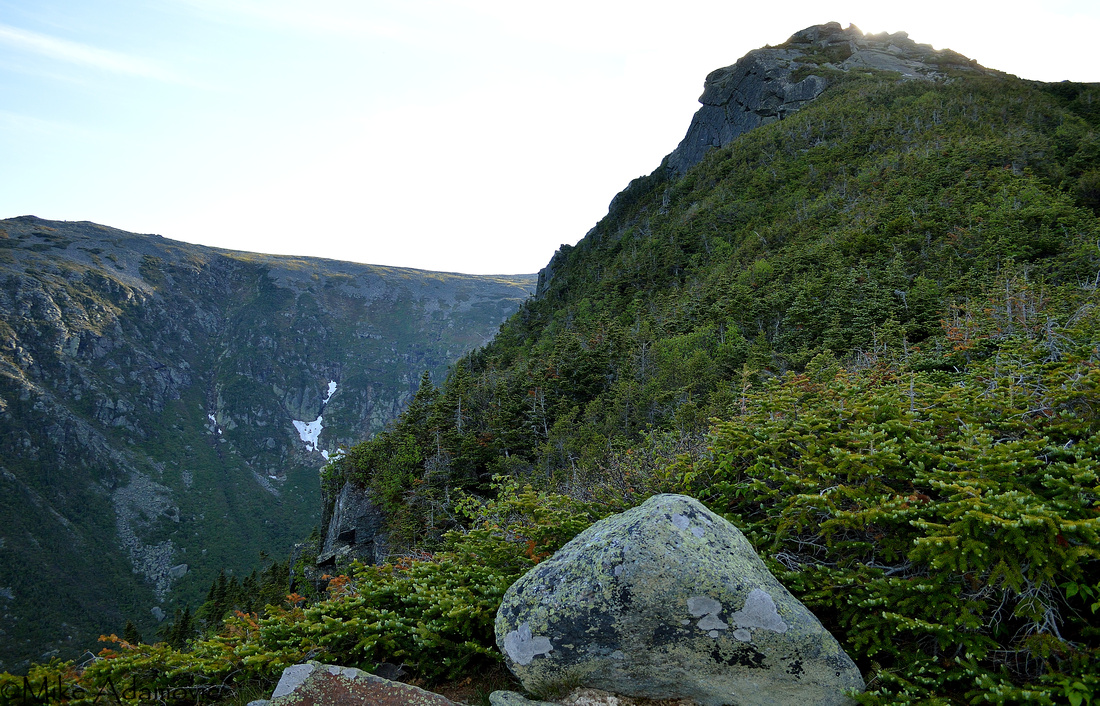Legacy Lost
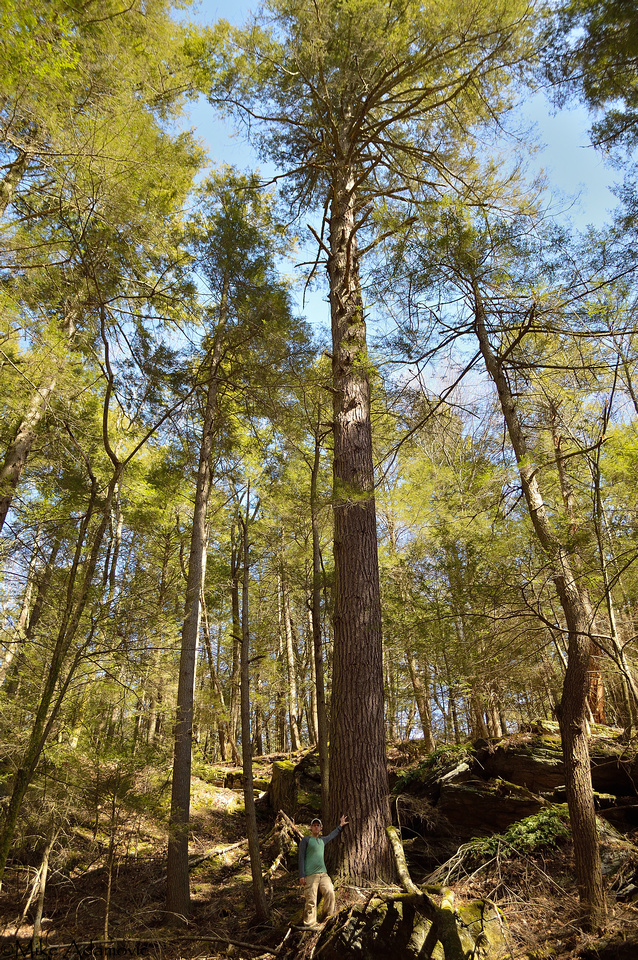

The first Europeans to arrive to eastern North America were greeted with what some have recently called the "Great American Forest." This mainly uninterrupted wall stretching from the Atlantic to the Great Plains was composed of trees of every shape and dimension, from tiny saplings and mid-sized individuals, that we're accustomed to seeing in our forests today, to truly titanic and venerable specimens, some of which seemed to be as ancient as the very earth itself. The lushness, fecundity, and diversity of the scene overwhelmed the senses to those coming from the exhausted and overly tilled countryside of the Old World. While looked upon as a verdant Eden by some, to many of the early settlers, this untamed land, beset with wild animals and Indians, and where even at noon, a perpetual twilight held sway underneath the dense and lofty canopy, was a fearsome wilderness that needed to be brought to heel and cultivated to satisfy their Christian ideals.
Adrien van der Donck, an early resident of New York, was enraptured by every feature of his new home, from the native plants and wildlife, to the geology and even culture of its aboriginal inhabitants, documenting his experiences in his treatise, A Description of New Netherland. Despite his obvious love of the land, he quickly dismissed those who thought it prudent to make more liberal use of the forests, as he believed they contained "such an abundance of wood that it will never be wanting." He further mentions that it was a common exercise of settlers to construct huge bonfires of wood, just because the material was in their way. The cornucopia appeared to be endless and inexhaustible. And so the slaughter began.
While later generations would prove to be less wasteful of natural resources as quantities did inevitably begin to dwindle, this didn't stop the razing of forests. Trees were cut for the production of boards and paper, with larger individuals, especially the exceedingly tall and lank white pines being used for ship masts; hemlocks were stripped of their tannin-rich bark for the leather industry; and a variety of trees were axed simply for use as firewood, hickory being especially prized.
Even the most ancient of trees weren't spared. Early reports document eastern forests being filled with grand and stately trees of dimensions most Americans have never seen and can scarcely visualize. The naturalist William Bartram in the late 1700's described encountering a grove of black oaks in Georgia, some of which "measured eight, nine, ten, and eleven feet diameter five feet above the ground." In the same area he encountered tulip trees and beeches that "were equally stately." White Pines in Maine and elsewhere attained heights of 200 feet of more. A grove in Pennsylvania supposedly had some that hit the 230 foot mark. And the mast producing chestnut trees prized by everyone for its tasty nuts occasionally reached diameters of a dozen feet in moist and rich soils of sheltered mountain hollows. Forests took on a cathedral-like atmosphere.
Additionally, the scents that emanated from the forests and meadows possessed a potency that surprised newly arrived explorers. A member of Henry Hudson's 1609 expedition sailing up the river that would later be named in his honor, described it thus: "The Lands they told us were as pleasant with Grasse and Flowers, and goodly Trees, as ever they had seene, and very sweet smells came from them." Over a century later the taxonimist Peter Kalm would report a "most odoriferous effluvia" wafting in from a flower filled river bank.
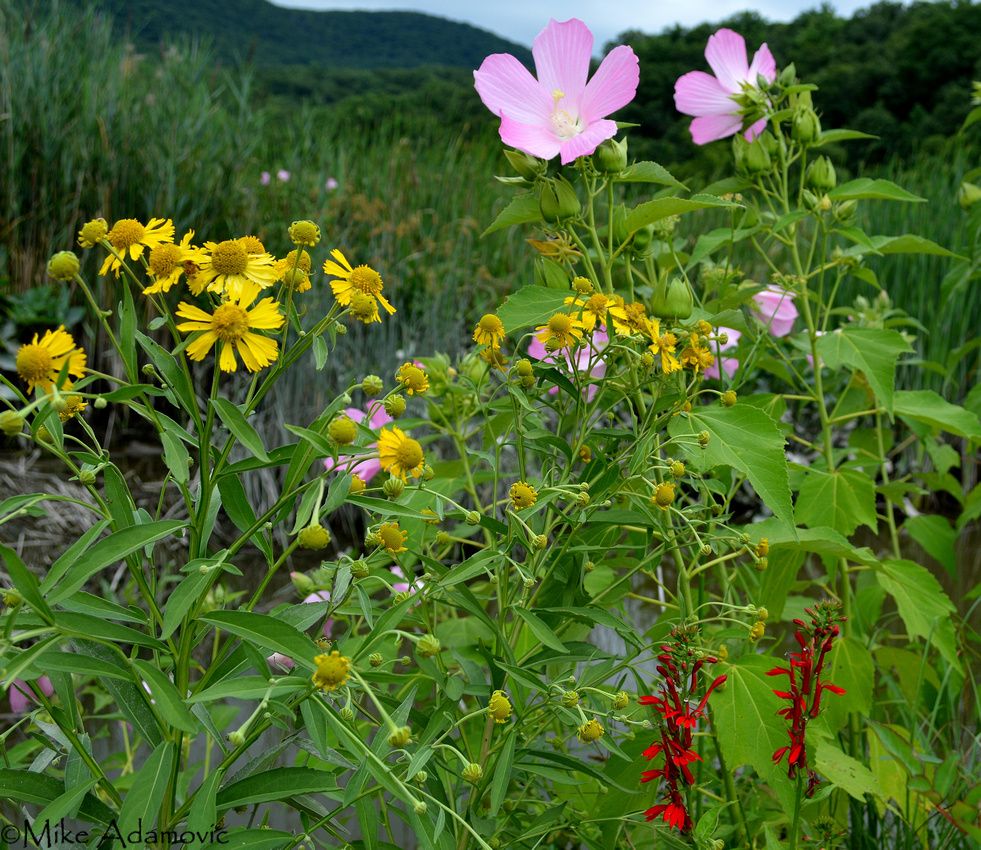
 Over the years, logging and the clearing of land for crops and pasture gradually reduced forest cover by as much as 80% in the Northeast. By the 1850's the damage was mostly complete. The elimination of forest and the ravenous killing of majestic apex predators, such as wolves, bears, and mountain lions, which were largely, if not wholly extirpated from the sunny and open confines of Henry David Thoreau's hometown of Concord, MA, made him lament the destruction wrought by his ancestors and contemporaries. He felt as though he was cheated and robbed. To him, such action was akin to desecrating a poem, in which his "ancestors have torn out many of the first leaves and grandest passages, and mutilated it in many places." As a result, his "wish to know an entire heaven and an entire earth" was unable to be met.
Over the years, logging and the clearing of land for crops and pasture gradually reduced forest cover by as much as 80% in the Northeast. By the 1850's the damage was mostly complete. The elimination of forest and the ravenous killing of majestic apex predators, such as wolves, bears, and mountain lions, which were largely, if not wholly extirpated from the sunny and open confines of Henry David Thoreau's hometown of Concord, MA, made him lament the destruction wrought by his ancestors and contemporaries. He felt as though he was cheated and robbed. To him, such action was akin to desecrating a poem, in which his "ancestors have torn out many of the first leaves and grandest passages, and mutilated it in many places." As a result, his "wish to know an entire heaven and an entire earth" was unable to be met.
Today around only one-half of one percent of original, untouched forest remains in the Northeast. These fragmented patches of old-growth forest are often located in inaccessible locations where it wasn't possible or worth the trouble to clear the land. New York holds the largest quantities of old-growth, the majority of it located in the Adirondack Preserve, followed behind by Maine, and then Pennsylvania.
***
There is no single definition of what classifies as old-growth; opinions between ecologists and foresters differ wildly. While the former see old-growth as being defined as forests largely untouched since European arrival, composed of many trees which are normally hundreds of years old and reaching the end of their lives, some foresters classify old-growth as stands which are between a mere 80-120 years old. The reason for this is simple: many trees at this age begin to slow their growth, and shortly thereafter may develop features which are detrimental to the timber industry, such as heartwood rot and crown shrinkage. From an economic standpoint, these types of forests are typically of less value than those that have reached their "peak." But in ecological terms, forest growth comprised of declining giants is of more value. Older forests are stabler, contain significantly higher rates of biodiversity, and play more vital roles in the environment.
For our purposes here we will be going with the definition generally agreed upon by ecologists. The exact criteria used to determine whether a forest is truly worthy of old-growth status falls upon the following:
1. At least half of the trees making it to canopy height must be more than half the maximum age of the species. Also, at least a few trees nearing the maximum age are present.
2. Lack of human disturbance. -No stone walls are seen passing through the forest; trees have not been cut; nor any other significant alteration made.
3. Multilayered and uneven forest. -Discrete canopy, understory, and herbaceous layers. Trees of all different sizes and ages are present, from seedlings to towering giants. Canopy gaps exists.
4. Late successional or climax species species are dominant. These vary based on the region and are usually shade-tolerant. Hemlock, American beech, and sugar maple are but a few typical species found at lower elevations.
5. Understory is full of decaying trunks and limbs in various stages of decay. Pit and mound topography is also present—shows where uprooted trees have pulled up soil into conspicuous mounds. Woody debris and the uneven forest floor topography shows the forest has attained a great age.
6. Larger trees possess few limbs on lower trunk. -This is an indication that trees started their lives in a forest with a high canopy.
7. Mosses, lichens, and fungi are prominent. -These organisms take a long time to develop and thrive in stable, long-lived ecosystems.
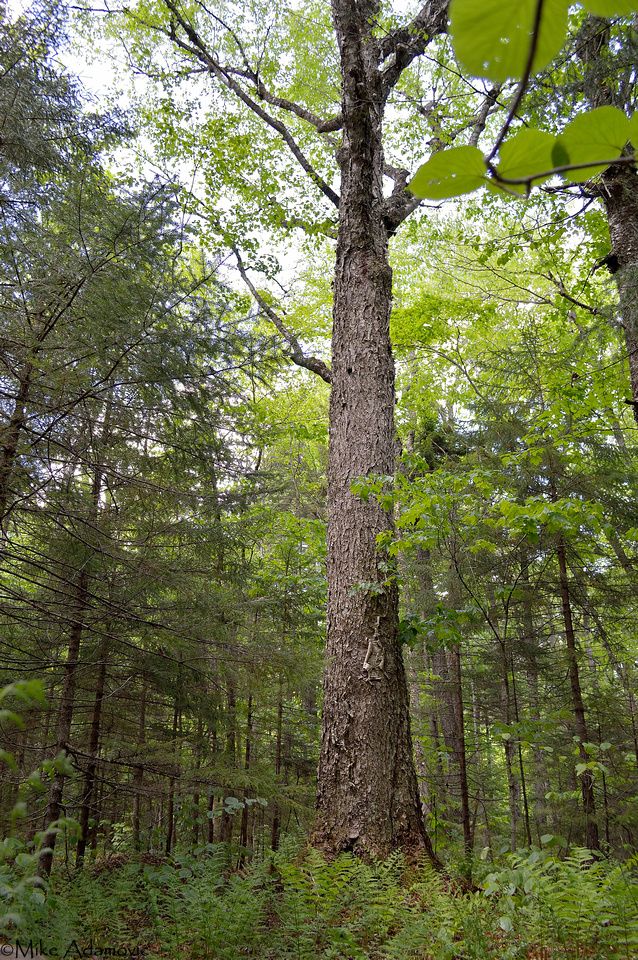

***
As the years dragged on, the serious adverse effects of logging on the landscape became more profound and unignorable. In New York's Adirondacks and surrounding mountain ranges, clear-cutting denuded entire mountains. Without roots and vegetation to hold down the soil, erosion washed tremendous amounts of sediment into surrounding streams that eventually funneled into the Hudson River. This waterway was of grand importance for commerce and travel. The influx of sediment decreased the depth of the river and aided in the proliferation of sand bars which posed serious problems for transportation.
Erosion was far from the only problem. As the trees fell, the ubiquitous sponge-like moss that draped the forest floor withered and died with the increased sunlight and exposure. This moss, according to prominent Adirondack surveyor, Verplanck Colvin, was in spots knee deep on the sides of the mountains and held many times its weight in water. With its absence, innumerable streams ran dry. In summer, terrible droughts gripped the region and the passage on the Hudson was further impacted. But in early spring, as the weather warmed, the opposite occurred and massive flooding took place. Heavy winter snows exposed to direct sunlight quickly melted, streaming prolifically down the mountains and into the narrow valleys. Dense forest once shielded the snow and it melted gradually, with sheets of thick moss absorbing huge quantities of runoff, releasing it slowly in the warmer months. With the removal of these buffers all protection evaporated as quickly as the scant moisture now clinging to the denuded mountain slopes in summer.
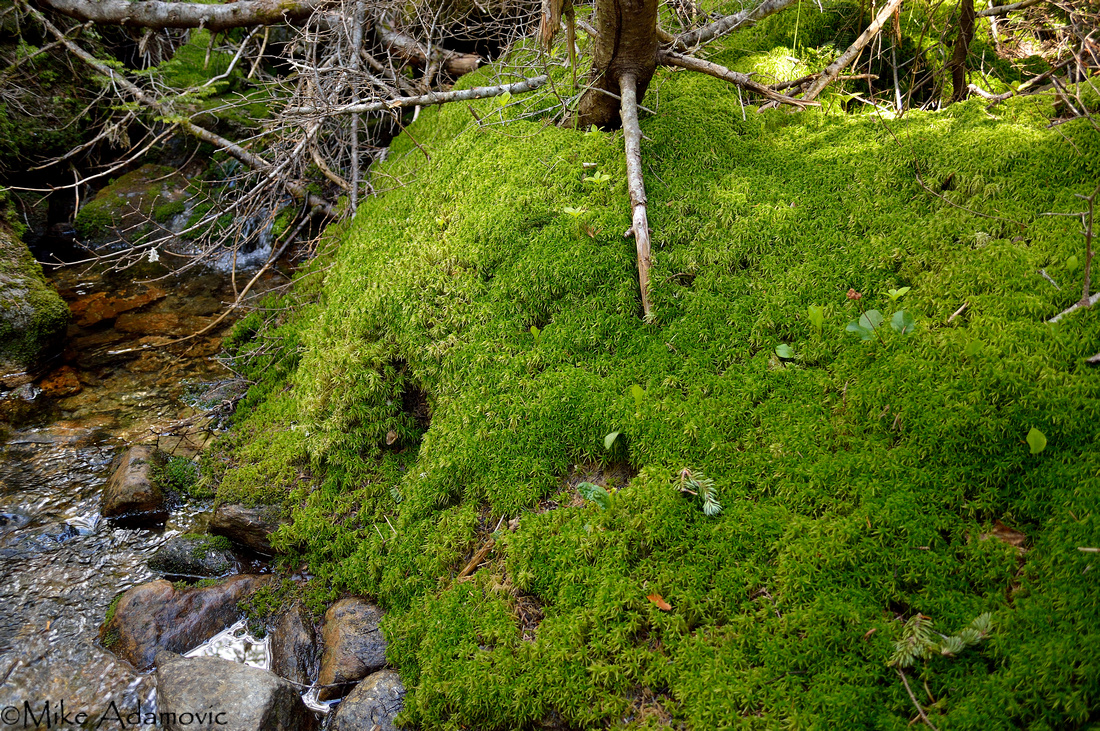
 Only when economics came into play, when property damage and loss of revenue increased dramatically, did any meaningful action take place. In 1885, after vehement outcries by the local populace, New York legislators devised and approved the Adirondack and Catskill Forest Preserves to safeguard the watersheds of the Hudson. It ensured the protected land would remain "forever wild." Today, the Adirondack Forest Preserves consists of 2.6 million acres of state owned land, with the Catskill Forest Preserve boasting a smaller, yet still highly significant 286,000 acres. Logging is completely banned throughout both. Not even dead woody debris can be removed or destroyed within their bounds.
Only when economics came into play, when property damage and loss of revenue increased dramatically, did any meaningful action take place. In 1885, after vehement outcries by the local populace, New York legislators devised and approved the Adirondack and Catskill Forest Preserves to safeguard the watersheds of the Hudson. It ensured the protected land would remain "forever wild." Today, the Adirondack Forest Preserves consists of 2.6 million acres of state owned land, with the Catskill Forest Preserve boasting a smaller, yet still highly significant 286,000 acres. Logging is completely banned throughout both. Not even dead woody debris can be removed or destroyed within their bounds.
Right around the time these preserves were born, reforesting on a larger scale began to take place throughout the entire region. While the creation of parks and preserves assisted with this movement, natural societal shifts proved to be the main driving force. As the West opened up, farmers tired of their comparatively small plots of stony land in the glaciated Northeast, relished an opportunity to ply their trade in the flat and expansive plains of the vastly fertile Mid-West. Abandoned farms in little time reverted back to their original state. The countless stone walls the criss-cross many shady forest interiors are lingering reminders of the region's agricultural past. Logging companies, likewise, migrated away after depleting lumber supplies, finding significantly richer stores along the West Coast, where truly gargantuan trees, such as the imposing redwoods and sequoias, dominated the landscape. Despite rampant development and commercialization, there's more forested area throughout the region today than there was a century ago.
While total forest cover has rebounded quite significantly throughout the Northeast, irreparable harm has been done and continues to hamper our sylvan communities. The introduction of invasive species has seen to this. Exotic insects and fungi are the main pests responsible for the plummeting diversity that's presently being witnessed all across the country.
Chestnut
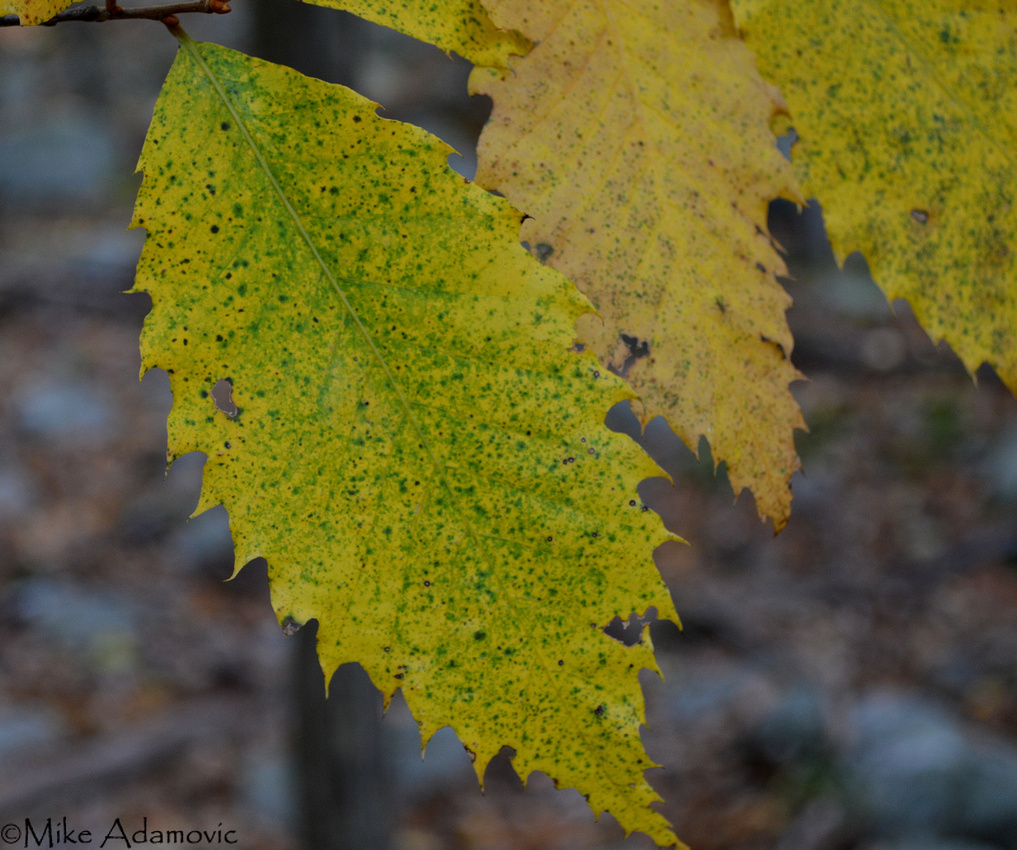

One of the most devastating and heartbreaking losses is that of the American Chestnut. Once widespread throughout much of the eastern half of the country, and comprising as much as 25% of some forests (mainly in the Appalachian Mountains), this species is now largely absent thanks entirely to the Asian fungus, Cryphonectria parasitica. First documented infecting trees in New York City in 1904—the result of a contaminated shipment of Japanese chestnuts—within a few decades it spread by means of microscopic spores throughout the American chestnut's entire range, killing off an estimated 4 billion trees, or 99% of the population. The fungus kills infected trees by destroying the cambium layer, mainly by the production of toxic compounds that lowers the pH to levels that are deadly to cells. Over a period of approximately 2-4 years the fungus encircles the trunk, effectively girdling the tree. Tiny orange-brown patches on the outside of the bark, which eventually form into expansive cankers, indicate the fungus's presence.
Once lively forests quickly became skeletal versions of their former selves. The highly rot-resistant wood ensured their bare frames would remain to haunt the woods for years to come. After their disappearance other species claimed the chestnut's lost territory, dramatically reshaping forests. In the southern tier of the Northeast, Oak-Chestnut forests, dominated by these two genera, were most common, but eventually morphed into Oak-Hickory forests. The disappearance of this important mast-producing species, which each autumn covered the forests floors with copious quantities of large, meaty nuts left wildlife scrambling to find alternate sources of food. While the oaks and hickories both provide valuable nuts, they are neither as large, nor as reliable, as the chestnut. Acorn and hickory crops are erratic; some years they're plentiful, others nearly non-existent. Chestnuts, by comparison, consistently provided prolific bumper crops every year.
These trees lived in a variety of habitats, but flourished especially well in rocky hills and mountains with thin soil, gaining a solid foothold and thriving where few other trees could. Average heights ranged from 60-80 feet, but often achieved far larger dimensions. In an open pasture in Sheffield, MA, one observer noted the presence of a tree with a 30 foot circumference. Such trees were greatly prized by farmers. The nuts were an economically important crop. And the wood, being relatively lightweight, resistant to decay, and straight-grained, was utilized in the construction of homes, furniture, and fence posts, among other uses. In the spring, cream-white flowers studded along numerous floppy catkins at the ends of branches, looked, from a distance, like fog or snow draped across the undulating landscape, the trees being present in such lush profusion. It was a vastly impressive sight. For all of these reasons, the American chestnut was declared to be "one of the most magnificent trees of our woods" by a nineteenth century author.
Despite the chestnut blight toppling this tree as a canopy species, it has not been fully eliminated. They continue in some areas to live on as sickly shrubs of the understory. The fungus attacks above ground portions of the plant, yet leaves the roots alone. Chestnuts are capable of regenerating by root sprouts. Fortunate individuals will rise perhaps as many as 30 feet before the fungus once again topples them. The highest concentration of these resprouts I've encountered in the region is in Connecticut along the Appalachian Trail on the slopes of the craggy and boulder strewn Schaghticoke Mountain. Here, in certain areas, chestnuts still do constitute at least a quarter of the trees present. And a small fraction actually fruit, although the nuts produced are generally abortive and undersized.
While the loss of the chestnut is the most extreme example of the negative impacts wrought by invasive species to date, this could soon change. Hemlock and ash trees are facing the prospect of destruction to a similar degree.
Hemlock


The eastern hemlock, finally recovering from its long exploitation by the leather industry throughout the 19th century, now faces an even graver threat than the axe. This time it comes from an insect whose destruction is far more encompassing and complete. The culprit is the hemlock woolly adelgid. This tiny, aphid-like insect, feeds on sap of young branches, stealing crucial starches that are necessary for the growth and maintenance of the tree. Fuzzy white egg sacs coat the underside of branches of infected trees. Typically within a period of 4-10 years, the trees, sucked dry, are unable to recover and die. The old adage, "those who forget the past are doomed to repeat it" is most appropriate here. As with the chestnut blight, these pests arrived from Japan, first being detected in the eastern U.S. in Virginia during the early 1950's. Since then it has been creeping north and west by about 15 miles a year.
Currently, most infestations are limited to the southern half of the Northeast. Northern reaches of the region, as of yet, will be difficult to colonize, as the adelgid is cold intolerant. In the future, warmer and less severe winters driven by climate change may allow the pests access to the evergreen-rich north.


Some of the most ancient of our trees are hemlocks. This slow growing species can attain an age of 800 years or more. The oldest ever recorded was purportedly nearing its 1,000th birthday. Size can be deceptive when it comes to age. A 6 foot tree living in a shady understory might be as much as 60 years old. Rapid growth occurs when a canopy gap floods the lower levels with light. Until then, trees patiently wait for a fortuitous overhead disturbance.
Hemlocks require damp and fertile soil. They are frequently located in dark ravines and north facing mountain slopes, where streams are present or moisture is prone to linger. Once a grove is established the unusually dense canopy ensures even less evaporation takes place. More moisture is also retained though the thick mats of moss which are apt to accrue in these conditions. Unlike the chestnut, hemlocks lack the ability to regenerate after being damaged. Due to lack of regeneration, their slow growth rate, and the fact that hemlock is a climax species that can only take hold later in the line of forest succession, hemlock forests take ages to recover. When they disappear they are likely to be replaced with forests of birches and oaks or those compromised of beech and sugar maple, depending on latitude.
A widespread loss, similar to what we're now experiencing, did occur once before, beginning approximately 5,500 years ago. Based on pollen samples recovered from bottoms of bogs and other wetlands that have been stratified in distinct layers, it's possible to determine the species composition and abundance surrounding these areas during a specific time frame. The samples indicate a quick and catastrophic event all but eliminated these trees from the eastern U.S. Over the years, some have blamed this loss on disease, insect pests, changing climate, and various combinations of the three. Recent research shows that the larvae of the hemlock looper, a type of moth, was most likely responsible for the bulk of the damage. The larval inchworm stage feverishly devours hemlock needles, causing near total defoliation that can kill trees in as little as a year. These pests have also been described as "wasteful feeders," by their habit of taking only a bite or two of individual needles before moving onto the next. Large outbreaks periodically occur in localized areas that can result in the deaths of hundreds to thousands of trees.
It has been theorized that up until the great decline, hemlock loopers were absent in the east. Both an eastern and western variety exist: it's thought that loopers from the Pacific Northwest somehow managed to journey east. They arrived to a land peppered with hemlocks bearing almost no resistance. Not until 2,000 years later did populations begin to rebound, when the few survivors that did possess some level of defense slowly managed to repopulate the region. Hemlock concentrations still fall below what they were at before their precipitous decline. The lagging numbers have been attributed to climatic differences, most notably a shift to drier conditions.
It is likely our present problem with the adelgid will follow a similar course. Hemlocks will be reduced to fractions of their former numbers but will ultimately mount a resurgence. Too bad it will take millenia to accomplish.
Ash
In 2002, the first recorded instance of the emerald ash borer—yet another invasive insect—was documented in the U.S. for the first time in Michigan. Since its discovery it has spread throughout a sizable swath of eastern and central North America. This Asian pest targets members of the genus Fraxinus. All native ash species are susceptible.
The emerald ash borer is a striking insect, boasting an iridescent, metallic green exoskeleton. Attractive adults cause only minor damage to ash trees by feeding on foliage. The grubby larvae, on the other hand, swarm throughout the inner bark, leaving behind serpentine galleries, or pathways, that disrupt water and nutrient transport. Eventually, the bark is girdled by these passages and the tree succumbs. Large individuals will die after 3-4 years on infestation; young trees in as little as a single year.
Apart from peeling back the bark to look for larval galleries, D-shaped holes in the outer bark is a telltale sign that indicates the insect's presence. These holes are created as newly metamorphosed adults exit the tree. In areas with abundant woodpecker populations, infested trees can be seen at a distance stripped of their bark. These birds on their quest to locate their next meals fastidiously tear it off, sensing a cornucopia of wealth beneath. The entirety of the outer bark, from base to crown, is frequently stripped off, with significant piles seen littering the forest floor beneath the tree. This can make the forest appear significantly sicker than it actually is, especially in locations comprised primarily of ashes. Woodpeckers play a role in diminishing emerald ash borer concentrations, but only to a minor extent, as these insects are in too prodigious quantities to meaningfully combat.


Certain regions, such as New England, will be minimally impacted, as ash trees generally make-up only around 1-2% of forests. New York's forests, by contrast, average roughly five times that amount. Certain western areas of the state possess much higher percentages, with ash comprising in some cases over a quarter of the tree population. In this respect, the loss of the various ash species will be felt as intensely as that of the once prevalent chestnut.
It's been said that ash is second only to oak in terms of usefulness when it comes to trees of North America. Ash is a valuable lumber source, prized for its strength, hardness, and elasticity. Baseballs bats, tool handles, and a wide variety of furniture is made from its wood. Native Americans used and still use it to construct baskets. And to the Penobscot tribe, the ash is pivotal in their creation myth.
Ecologically speaking, ashes are important for their role in providing shelter and food for wildlife. Large diameter trees often form spacious trunk cavities when damaged. These are used as nesting sites by squirrels and various birds, most importantly woodpeckers, wood ducks, and owls. Seeds are eaten by birds and small mammals; foliage is browsed by deer; and bark is occasionally chewed by beaver and porcupine.


While the invasives just addressed are causing some of the most severe problems in our region, they are by no means the only to daunt us. The Asian longhorned beetle is another nasty exotic insect wreaking ecological harm, killing off scores of maples and other hardwoods. There's also the gypsy moth, white pine blister rust, and Dutch elm disease. While we work diligently to address these and other problems, new issues are always cropping up to bombard and overwhelm. Often it makes one question whether it's worth all the effort to attempt to correct these mistakes.
We can't let apathy take over, though. We're making real progress in certain instances. Biological control, or biocontrol, for short, is increasingly being used with promising results. This involves using armies of living organisms to wage the war for us. It has already been successful with diminishing the exotic purple loosestife in wetlands. We're now using tiny beetles that feed exclusively on the woolly adelgid to help save the hemlocks. In a similar vein, crossbreeding and genetic engineering techniques are now in play to help make the American chestnut blight resistant. As long as we continue to care about these plants we will find a way—if one exists. But, as the sagacious Erasmus once said: "Prevention is the best cure."
